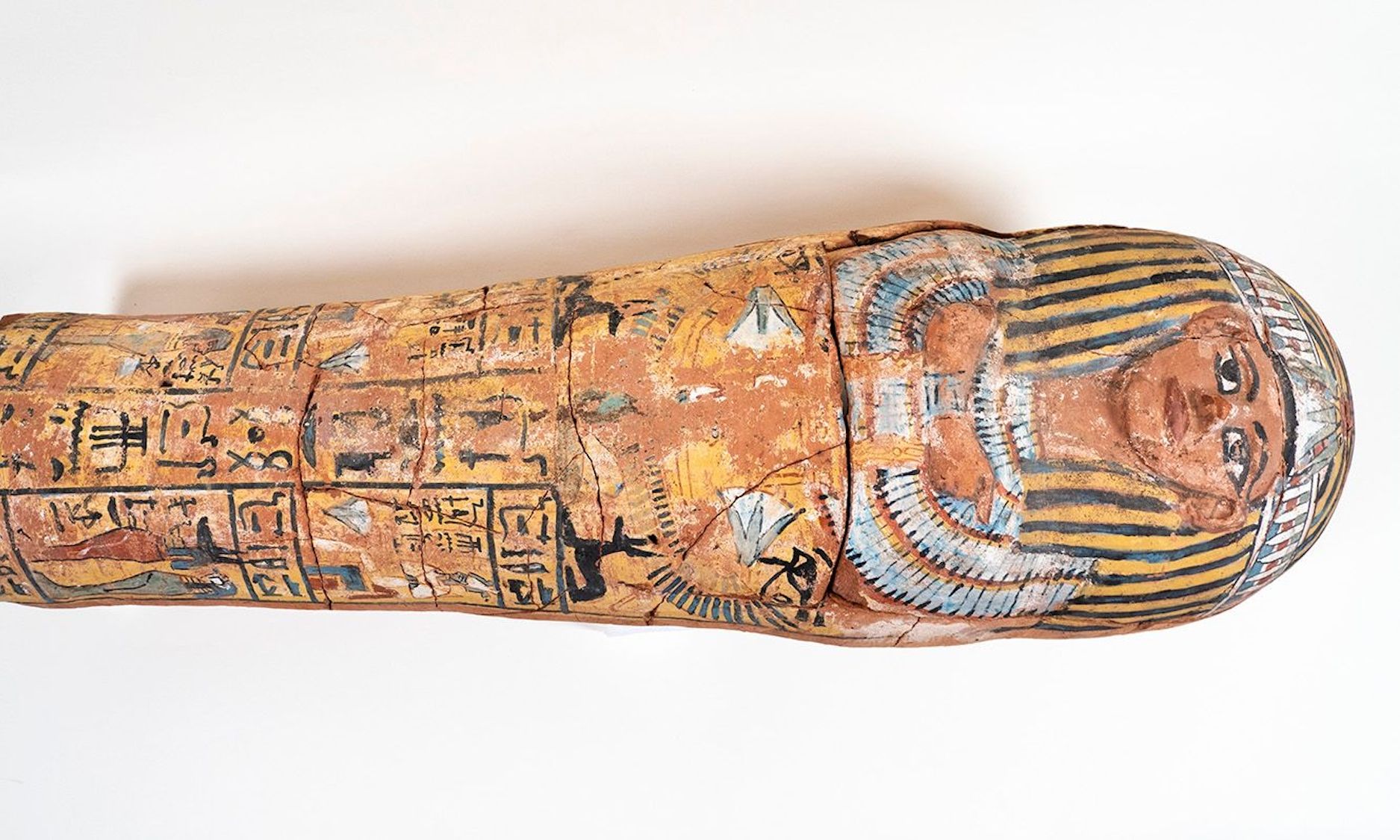The Egyptian ceramic child sarcophagus belonged to a boy named Paneferneb Photo: Marcus Holmqvist. Courtesy: Gustavianum, Uppsala University Museum
The Museum of Fine Arts (MFA) Boston is returning a small, ornate clay coffin or sarcophagus created for an Egyptian boy who died more than 3,000 years ago to the Gustavianum, Uppsala University Museum after discovering that the object had been stolen from the Swedish institution.
Provenance research by the MFA Boston revealed that the documents provided when it acquired the object in 1985—including paperwork suggesting that it had been excavated by the Swedish artist Eric Ståhl (1918-99) in 1937—were inauthentic. The coffin was actually excavated by the British School of Archaeology in Egypt from a site at Gurob in 1920. Two years later, as findings from the excavations were divided up between Western institutions, it was sent to the Victoria Museum of Egyptian Antiquities, as the Gustavianum was then known. At some point between then and 1970, it went missing from the museum.
After noticing a discrepancy between their own documentation and information in a 2008 book that includes a photograph of the coffin’s excavation and notes it was sent to the Gustavianum, curatorial staff at the MFA Boston reached out to their colleagues in Sweden.
“In this case, we were fortunate to have an excavation photograph showing where and when the coffin was found, so that we could begin to correct the record,” Victoria Reed, the MFA Boston’s senior curator of provenance, said in a statement. “Anytime we deaccession and restitute a work of art from the museum, it serves as a good reminder that we need to exercise as much diligence as possible as we build the collection.”
The coffin has been returned to the Gustavianum, but will need to undergo some conservation work before it is put on display. “The child’s sarcophagus is an important item in our collections and it means a lot to the museum and the university that it has now been returned to us,” Mikael Ahlund, the Gustavianum's director, said in a statement. “The sarcophagus is an excellent complement to our Egyptian collections and will now be available for research.”
The coffin dates from Egypt’s 19th dynasty (1295-1186BC), and is richly painted with figures and hieroglyphs. It was made for a boy named Paneferneb, and is around 43in (110cm) long. It was designed so that the head and chest areas form a lid that can be removed to place a body inside.
The circumstances surrounding the object’s disappearance from the Gustavianum and its trafficking into the US remain unknown.
MFA Boston returns Ancient Egyptian child’s coffin to Swedish museum it disappeared from decades ago

